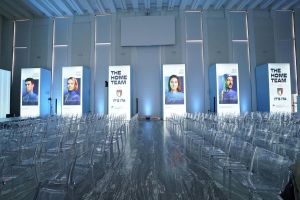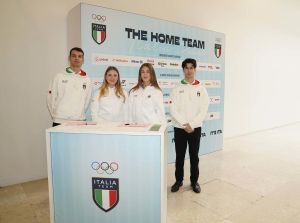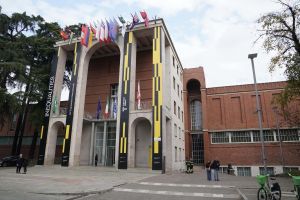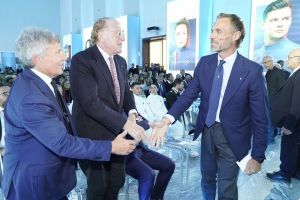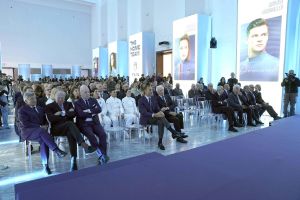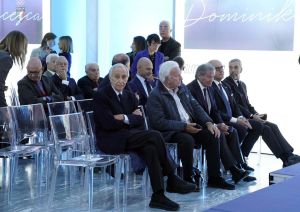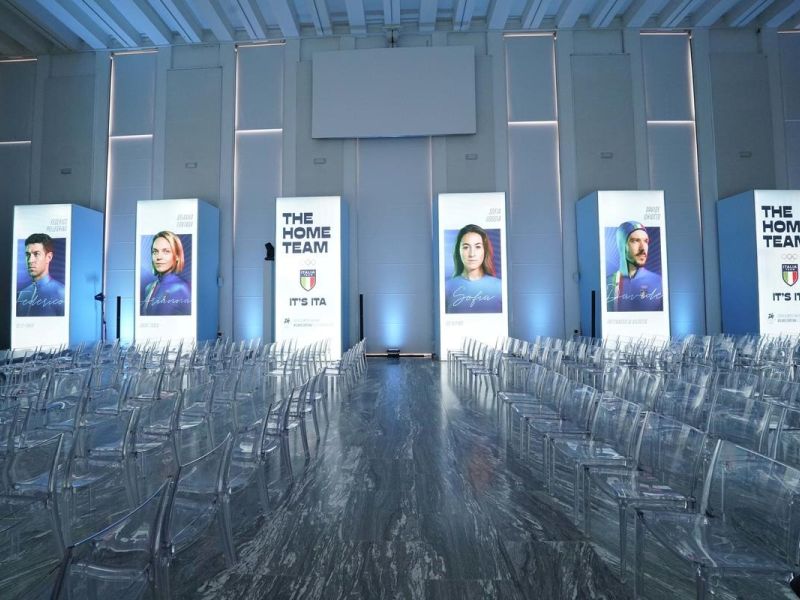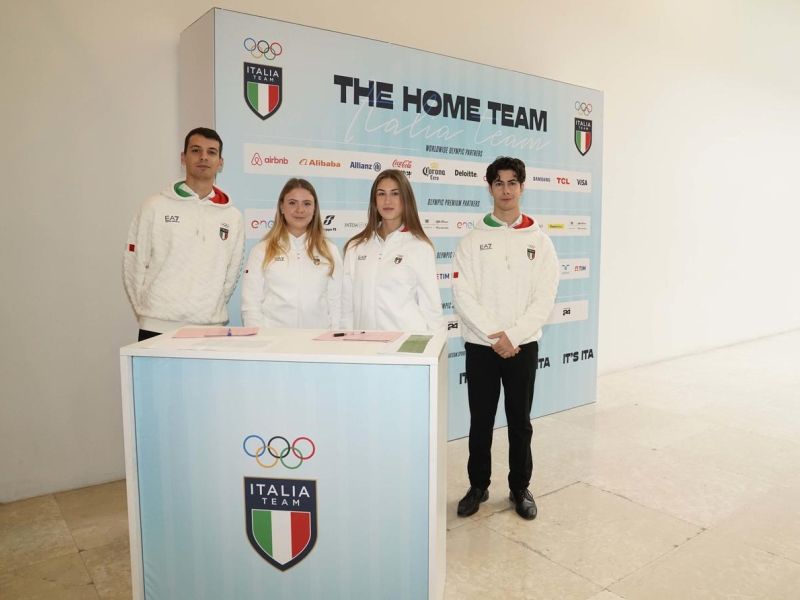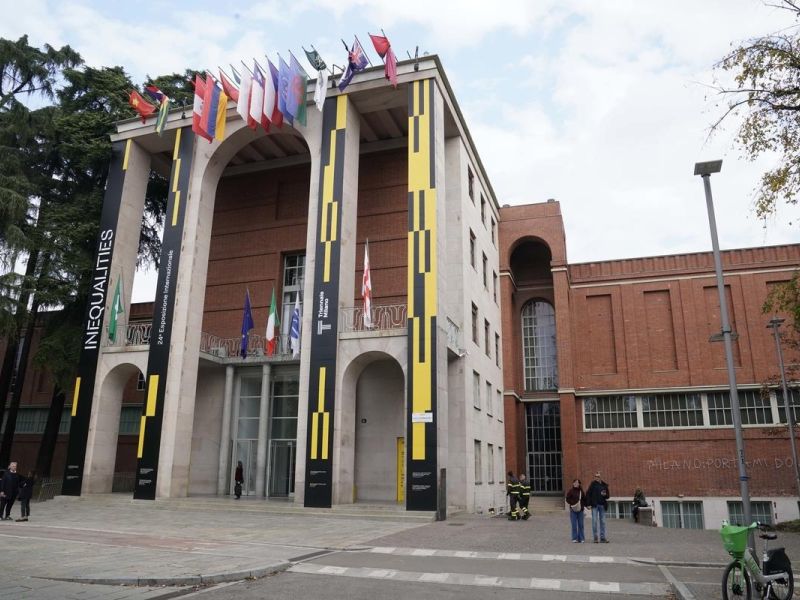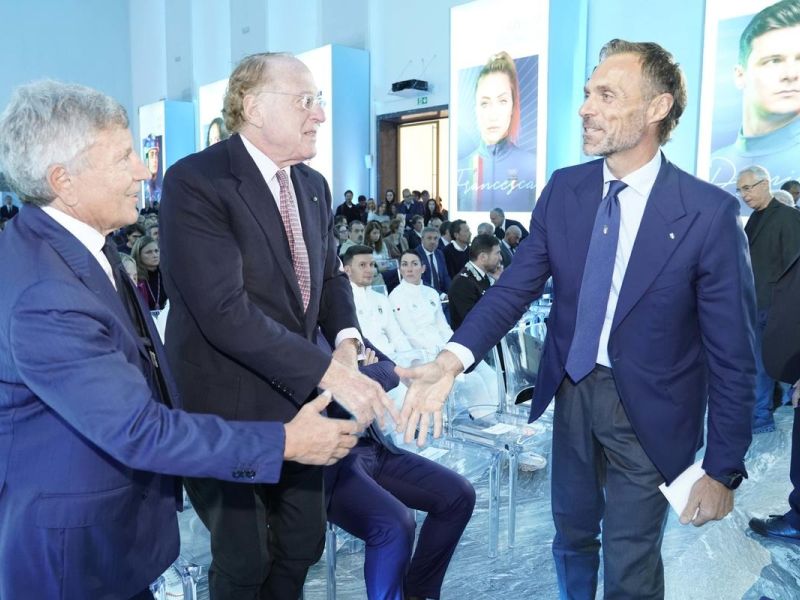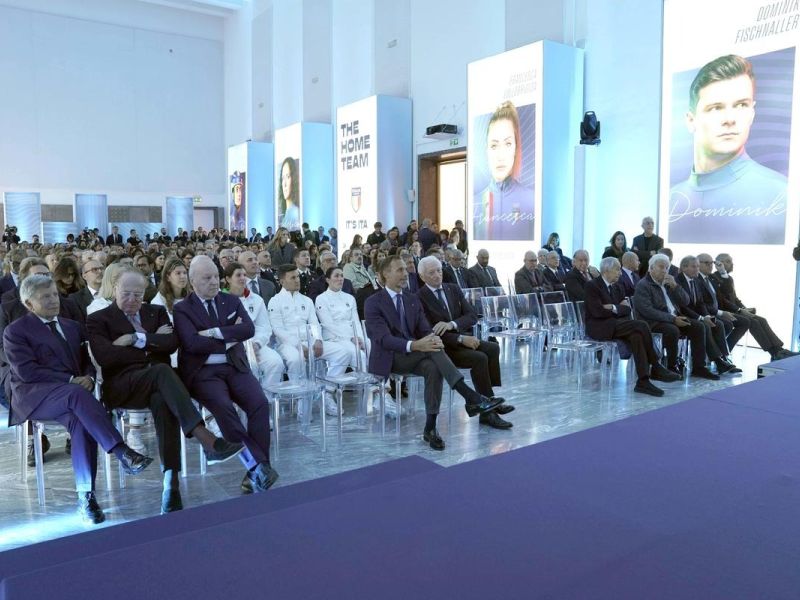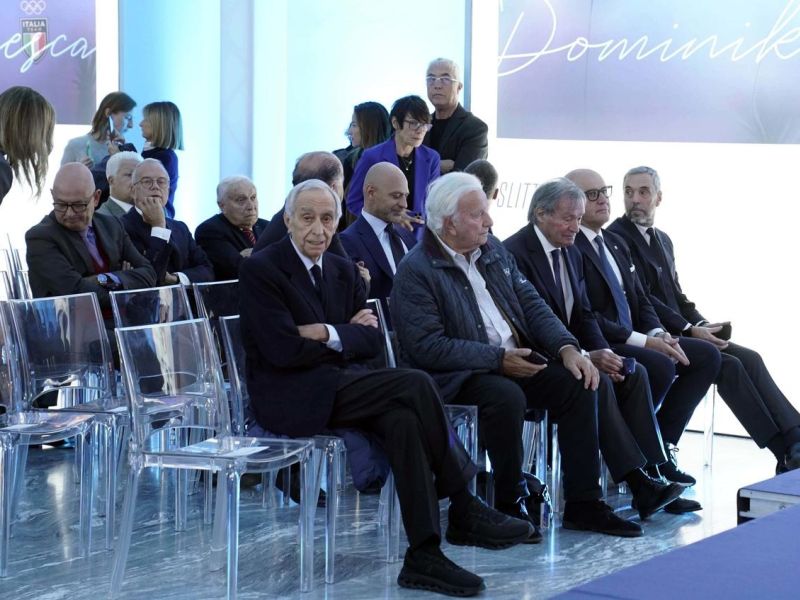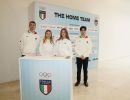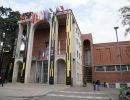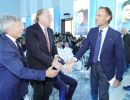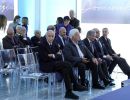‘Road to Milano Cortina 2026, -100’: the figures leading up to the Games and the Casa Italia MUSA project unveiled. Buonfiglio: “We want to be protagonists”
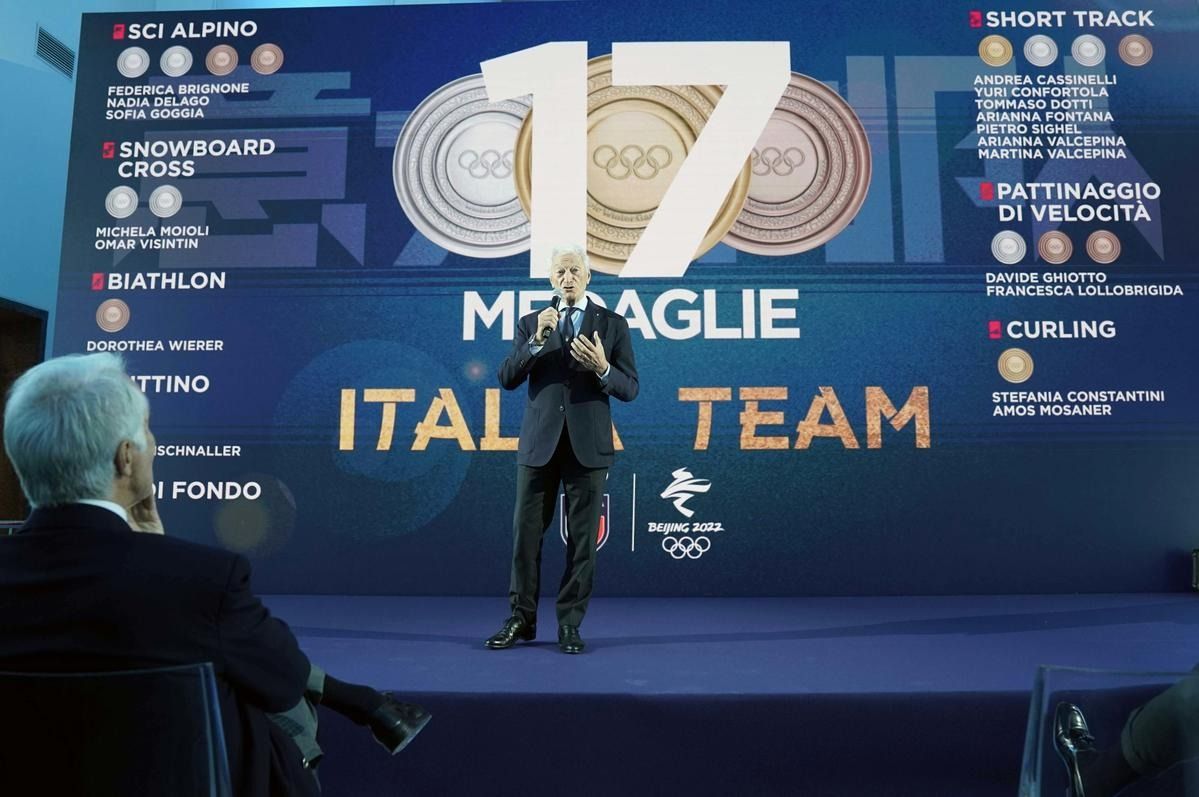
Inspiration, emotion, ambition. The timeless allure of the five rings casting its magic through the beauty and tradition of our country. The ‘100 days to go’ milestone before the Olympic Winter Games Milano Cortina 2026 – the fourth edition ever hosted in Italy – provided the opportunity to present the contents of a new chapter in sporting history.
At the “Road to Milano Cortina 2026 – 100 Days” event held at the Triennale Milano, CONI illustrated the activities, initiatives and projects developed in anticipation of the eagerly awaited event, while also revealing the main features shaping the concept of the hospitality house designed for the occasion.
The gathering – attended by officials, athletes, partners, media and other stakeholders – was opened by CONI President Luciano Buonfiglio, who said: “It’s a deeply moving moment, as I have the honour of representing Italian sport and experiencing this incredible journey towards the Games. I’m grateful to those who led the movement before me, mindful that athletes are at the heart of everything, supported by managers, coaches, doctors and many other professionals. I’m delighted that we are giving proper value to what has been achieved, as in this instance. CONI, the Milano Cortina 2026 Foundation, the Government, Federations, and military sports groups are all working together in the name of one Nation. We are acting as a team, leaving nothing to chance, focusing on every detail and striving to crown a four-year cycle of effort. I’m certain we’ll witness a spectacular event and do our utmost to be successful protagonists. My thanks go to engineer Boeri for hosting us at the Triennale. Our sporting goal is to improve on the 17 podiums achieved in Beijing”.
CONI General Secretary and Chef de Mission Carlo Mornati provided an overview of the sporting scenario, highlighting the strengths and the health of the movement: “The Road to has been a tradition since 2016. We launch the claim and share the journey that is leading us to the Games, thanks to the invaluable work of all CONI assets – from the Olympic Preparation Centres to the Institute of Sports Medicine and Science, and the departments involved. Milano Cortina has a special charm; we truly feel like protagonists. For the first time, CONI has played a unique role: under President Malagò’s leadership, we’ve brought together multiple regions under one dual identity. It’s a one-of-a-kind experience. Compared to Beijing, we’ll have one more sport, with the number of events rising from 109 to 116, and with new mixed-gender events to further promote gender equality. We’ll compete in five clusters – Milan, Cortina, Anterselva, Valtellina and Val di Fiemme – iconic venues as outlined in the bid dossier. We come from Beijing, our second-best edition ever after Lillehammer, and we aim to improve our medal tally. Projections place us eighth, with one more medal than four years ago. Competitiveness has grown sharply in the last four years, as has the number of participating nations (+65% compared with Lillehammer 1994). The competitiveness of the Italia Team has increased by 240% compared to Vancouver 2010, with an Olympic Index up by 77% compared to 2012 in the Winter programme. We’ll be competing in every event except six, with over 200 athletes – our largest team ever. The numbers are very encouraging. There are many ways to assess a sporting movement, but we’re proud of the work done with the support of FISI, FISG and all the stakeholders involved. The real challenge is demographic decline: between 1992 and 2004, we lost 4.2 million potential athletes – a figure that deserves serious reflection for the future”.
Alessio Palombi, Head of Olympic Preparation, added: “It’s been a demanding four-year period. CONI has done its best to support the work of the Federations. The Olympic Preparation Centres have played a key role in optimising preparation and offering opportunities for physical and scientific testing. Compared with the previous cycle, there has been a 25% increase in the allocation of performance bonuses. Junior scholarships have also grown, helping to close the gap in the transition to the senior category, thanks in part to Olympic Solidarity. Many projects have supported athletes of Olympic interest, especially in technology and competition equipment – overall, nearly four million euros have been invested in Olympic preparation. In line with Paris, we’re confirming medal bonuses: €180,000 for gold, €90,000 for silver and €60,000 for bronze. Each cluster will have its own operational team, working autonomously. CONI’s structure will be efficient and essential in ensuring full representation for the Federations and their needs. For accommodation, we’ll make full use of the three Villages, also relying on nearby facilities depending on location. Transport operations will be centralised to manage transfers efficiently”.
Giampiero Pastore, Head of the Institute of Sports Medicine and Science, explained: “Medicine and Science work in close synergy with the Federations’ staff. A total of 319 medical examinations have been carried out on potential Olympians since CONI resumed control of the two areas. We’ll be present in all competition clusters with doctors and physiotherapists. The Sport Science department provides technical and scientific support – we’ve followed about 200 athletes who will compete in 10 of the 16 sports on the programme, through specific projects. Professionals will coordinate these activities during the Games as well. During the event, students from the second edition of CONI’s Olympic Management course will undertake their unforgettable internship”.
Following the technical presentation came the focus on hospitality.
Secretary General Carlo Mornati introduced the theme: “Casa Italia began in Los Angeles 1984. It has evolved over time into an hospitality house that accompanies the Italia Team and serves as a small media factory for sponsors and stakeholders, ensuring an unforgettable Olympic experience. The Triennale in Milan, Galleria Farsetti in Cortina and the Aquagranda venue in Livigno will showcase the best of Italy through the MUSA project. There will be many social and cultural moments enriching those special days”.
Lorenzo Pellicelli, Head of Marketing, provided further detail: “My thanks go to everyone present – athletes and partners supporting Casa Italia. The most important thing is that we’re self-funding through private support. We recently visited Los Angeles, the site of the first Casa Italia in 1984: today that place is still called Italy, a commercial hub that has kept its roots. Casa Italia creates value; we amplify the message that defines us. It’s a growth path that began in Rio 2016, building an identity that has become a heritage for CONI. It’s the gateway to discovering our country. This time, the paradigm is reversed: we’re the hosts. For the first time, Casa Italia will be open to the public – thanks to the Triennale for enabling this opportunity. The same will happen in Livigno, while Cortina will follow the traditional model due to space limits. We’ll be at the heart of the Games, proud to welcome anyone wanting to activate their projects in our setting, which will blend sport and culture. The theme will be MUSA – Italy that inspires the world: a journey through our excellence – from culture to art, cuisine and technology – culminating in the ‘station of sport’. Art and sport interact, as De Coubertin taught us. In Milan, thanks to the International Olympic Committee, we’ll stage an exhibition celebrating the Olympic spirit. The Galleria Farsetti in Cortina is a true gem – a lounge for sharing sport with its protagonists. With the support of the Municipality, we’ll make use of the outdoor areas, in a truly iconic location facing the Tofane. We don’t want to alter the site’s identity. Esselunga will be the driving force behind the food offer. Livigno will be the liveliest hub – a place for celebration and sharing the Games’ excitement with all nations. Medal celebrations will be held outdoors. Three sustainable Casa Italia venues, with an estimated 45,000 visitors, all interconnected and simultaneously sharing experiences”.
At the Triennale, attendees included ice dancers Charlene Guignard and Marco Fabbri – preparing for their fourth Olympic appearance – and members of the women’s ice hockey team led by Laura Fortino, dual citizen of Italy and Canada, and gold medallist at Sochi and silver medallist at PyeongChang 2018 with Team Canada.
The Italia Team aims to live another Olympic dream – wide awake.
Road to Milano Cortina 2026 Presentation
A 100 giorni dai Giochi il CONI traccia alla Triennale la "Road to Milano Cortina 2026"
